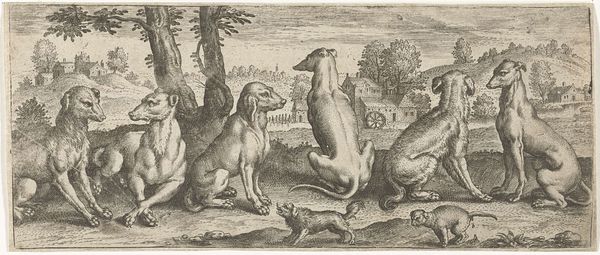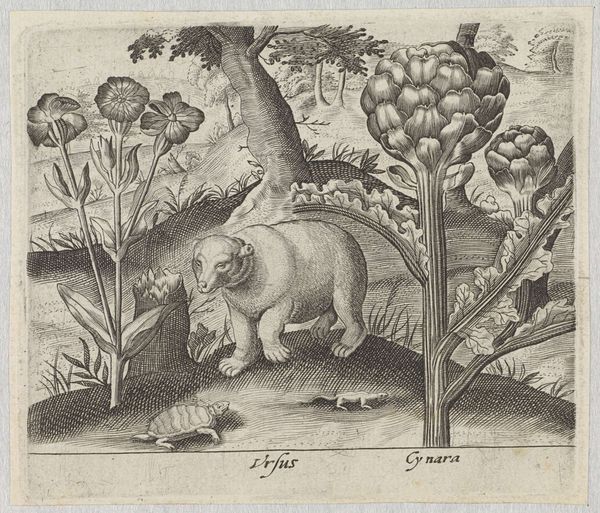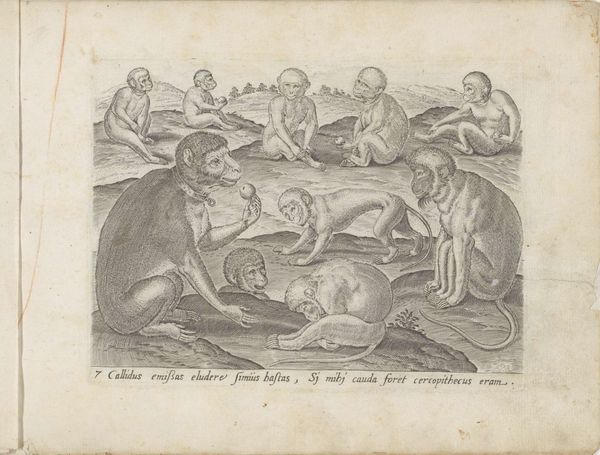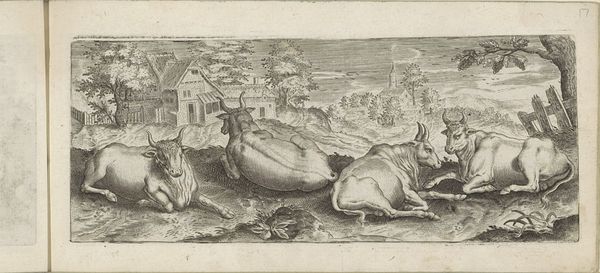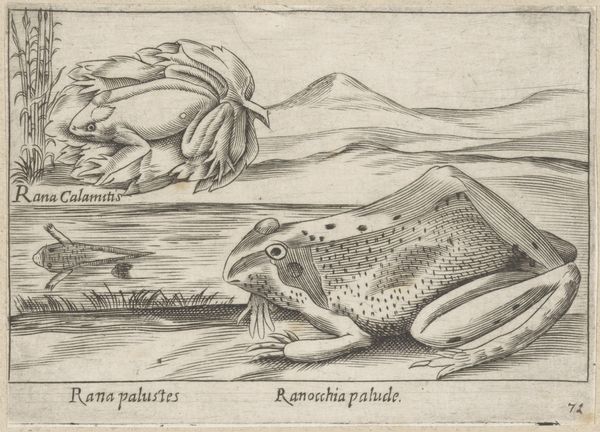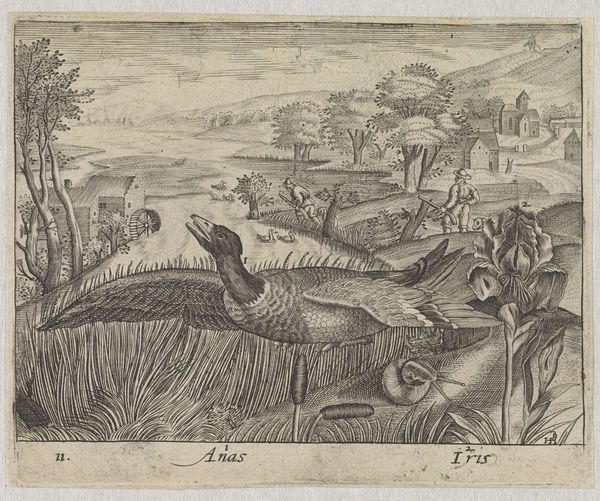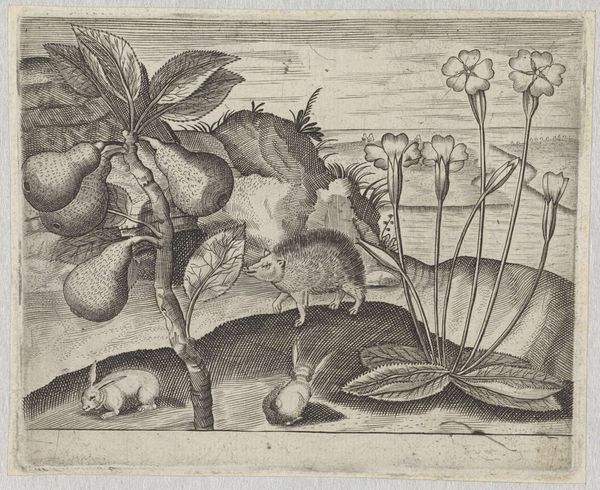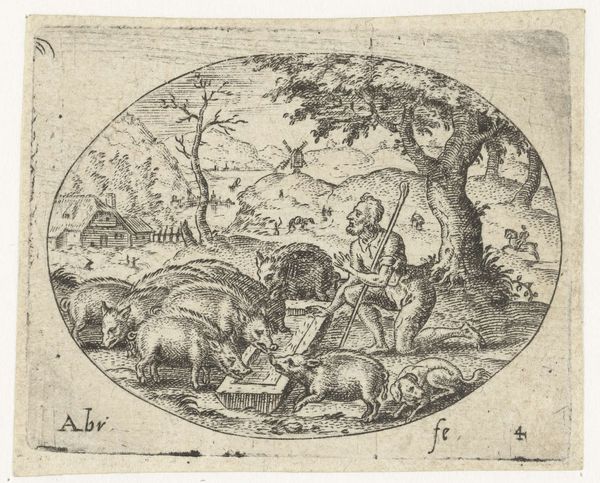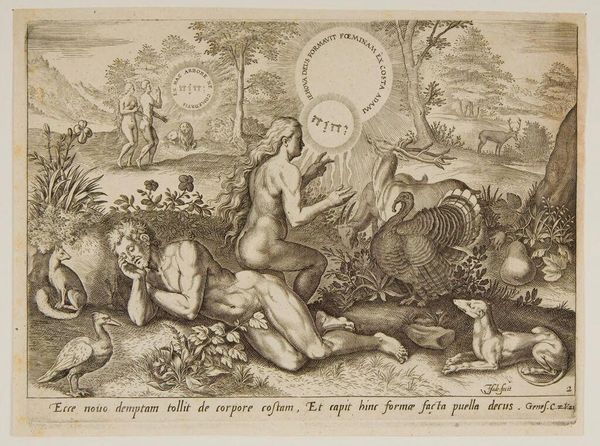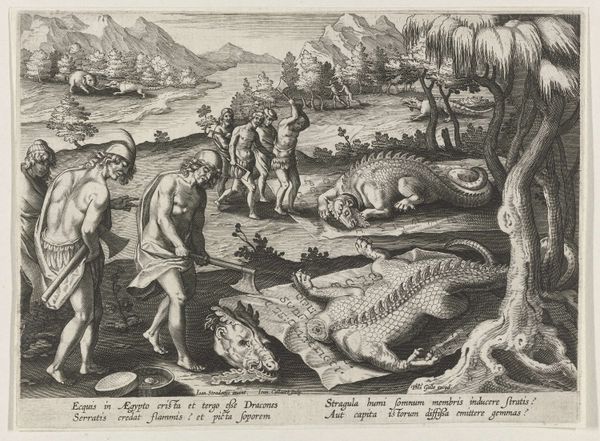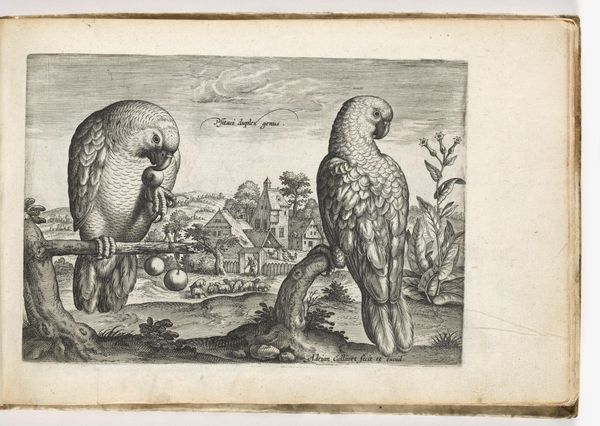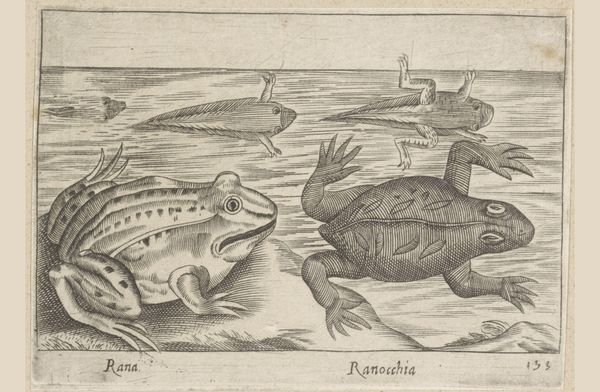
print, engraving
#
animal
# print
#
old engraving style
#
landscape
#
figuration
#
11_renaissance
#
northern-renaissance
#
engraving
Dimensions: height 95 mm, width 137 mm
Copyright: Rijks Museum: Open Domain
Curator: Welcome. We're looking at Antonio Tempesta’s "Kikvorsen" which translates to "Frogs", an engraving completed before 1650, here in the Rijksmuseum. It depicts two amphibians in the foreground, with a landscape scene playing out behind them. What strikes you initially? Editor: The stark contrast! It’s predominantly monochrome but incredibly detailed. The play of light and shadow on the frogs' skin, the textural quality achieved through line work alone, is mesmerizing. Curator: Tempesta, known for his battle scenes and landscapes, also produced these natural history prints. It’s interesting to consider the labor involved. This isn’t just art; it's knowledge production, contributing to early modern understanding of the natural world. How do you see the composition guiding our eye? Editor: The sheer scale of the frogs commands attention, then your eye traces the horizon, picking out the minuscule human figure, and livestock. Semiotically, the image posits a world seen from an alternative, amphibian perspective, reframing our notions of scale and importance. Curator: I think you’re onto something about scale, considering printmaking as a medium enabled wider circulation of knowledge and imagery across different social strata. A print like this could disseminate new perspectives about animals, landscape and human presence in the same space. Editor: Precisely! What meaning do you derive from the presence of "Bufo" and "Rostro" inscribed under each frog respectively? Curator: Tempesta likely borrowed them from existing encyclopedic inventories classifying natural life, suggesting perhaps these prints would have been bought to form part of a series. Editor: Interesting! Considering the density of the engraved lines, how they build tone and volume, the surface quality...I'm also wondering if the bucolic imagery operates on a symbolic level, too. Is there some commentary on human interactions with nature? Curator: Perhaps. Ultimately, understanding Tempesta’s context—the culture of scientific inquiry, printmaking practices, and patronage—offers a richer understanding of this seemingly simple image. Editor: Indeed. Paying attention to both the composition and its place within the social sphere, illuminates the many lives an artwork can contain.
Comments
No comments
Be the first to comment and join the conversation on the ultimate creative platform.
